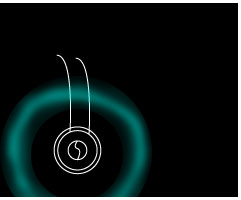In the event of an emergency situation such as a fire, or earthquake rapid discovery greatly increases an individuals chances of survival. To this end robotic solutions have been previously developed to aid emergency personnel. However several problems such as deployment logistics, variable environmental problems, infrastructural dependence, system robustness, and speed have prevented their widespread adaptation. Sensorfly aims to resolve these issues by using a cloud sensing system, composed of many low-cost light-weight helicopters carrying a minimal number of sensors.
Each node in the cloud is extremely lightweight (~30 grams), in order to achieve this low weight the number of sensors on each node is greatly limited. Each node carries its own navigational and communicational sensors and can be outfitted with one additional sensor for surveying an area. By having these nodes communicate with one another a smart network capable of providing a full and robust sense of the environment, while being able to support a high degree of deployment flexibility.
My first goal for this summer is to take the existing sensorfly software and develop some navigational control for each node. Once this goal has been met I will work on controlling a group or swarm of these nodes and developing effective controls for each swarm member.




